-
Membership
Membership
Anyone with an interest in the history of the built environment is welcome to join the Society of Architectural Historians -
Conferences
Conferences
SAH Annual International Conferences bring members together for scholarly exchange and networking -
Publications
Publications
Through print and digital publications, SAH documents the history of the built environment and disseminates scholarshipLatest Issue:

-
Programs
Programs
SAH promotes meaningful engagement with the history of the built environment through its programsMember Programs
-
Jobs & Opportunities
Jobs & Opportunities
SAH provides resources, fellowships, and grants to help further your career and professional life -
Support
Support
We invite you to support the educational mission of SAH by making a gift, becoming a member, or volunteering -
About
About
SAH promotes the study, interpretation, and conservation of the built environment worldwide for the benefit of all
Haida Gwaii: “at home on the chaaw salíi”
Adil Mansure is the 2022 recipient of the H. Allen Brooks Travelling Fellowship. All photographs are by the author, except where otherwise specified.
The forest, sea, and sky (…) None of these is the human realm. Humans are only at home on the chaaw salíi, [translated as “the place where the tide has been”] the boundary or intertidal zone, at the conjunction of all three. A few strokes of the paddle or a few steps into the bush are enough to leave the human world behind.1
I write this report from Haida Gwaii, an archipelago off the coast of British Columbia in Canada. Called the Queen Charlotte Islands by the British Empire and then Canada, these islands have been inhabited for thousands of years by the Haida. Previously blessed with an abundance of food from the Pacific Ocean, Hecate Straight, and several rivers, the Haida had ample time to advance their literary and visual arts, as well as develop other facets of their civilization. As is commonly referred to on the islands, even until about two centuries ago, as many as ten to twenty good fishing days followed by drying and smoking could sustain the Haida for the whole year. Somewhat different from the Yukon First Nations discussed in my previous fellowship report, the Haida were relatively less Nomadic, and much of their sustenance was met by forming clans and clusters and spreading out along the coastlines of each of the islands of the archipelago, which they all collectively stewarded. Other features of the islands that inform their architectural wisdom are: receding behind each coastline are some of the densest and richest rainforests in the world. Sustained by ample precipitation through the year, Haida Gwaii is home to incredibly bio-diverse flora and fauna. The incredibly tall cedar trees are perhaps the Haida’s most important harvest; these approximately 300-foot-long trees are also given second lives not only as immensely long beams for their longhouses, but also as totem poles and dug-out canoes. (Fig 1) Smaller artifacts from trees include spruce-root hats and baskets, tapestries, and carved masks and boxes. The ocean and the forest gave the Haida more than just food and art: they also developed advanced boat-building and sea-faring abilities, and their culture reflects rich exchanges from lands afar. Another feature of the island is that it is geologically unique and diverse, for example, the stone argillite is found almost exclusively on Haida Gwaii. I have found the Haida to have a unique sense of architectural space, which has undoubtedly emerged from an immense variety of factors, some of which are listed above—this is what I attempt to understand and articulate.
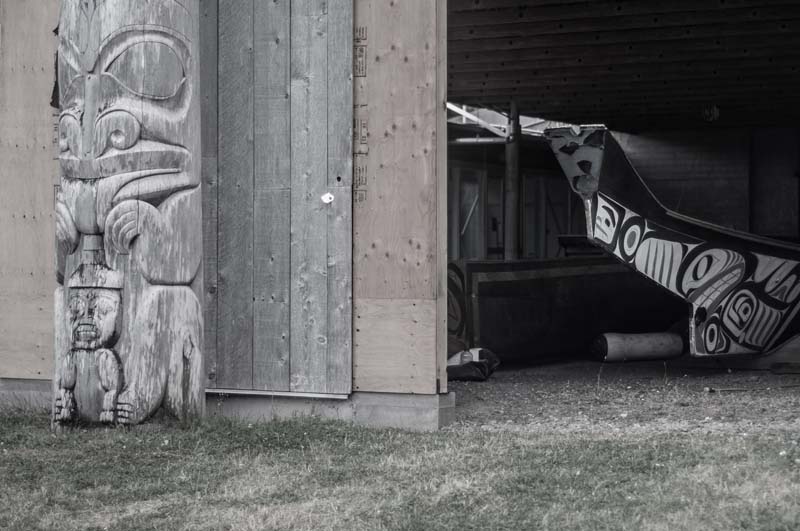
Figure 1: A totem pole and a dug-out canoe at the Haida Gwaii Museum, Skidegate
It must be remembered that colonization has been uniquely detrimental to the Haida Nation. Among some of the atrocities that several North American First Nations faced—such as forcibly bringing their children to residential schools, banning the use of their languages, limiting their fishing and hunting, and compelling Indigenous individuals to give up their status in exchange for permission to buy alcohol and other goods—the population of the Haida uniquely collapsed due to waves of smallpox epidemics in the mid-nineteenth century.2 Only a very small percentage of the population survived this, and they were forced to cluster into two villages: Hlg̱aagilda & G̱aw, now known as Skidegate and Old Masset. In speaking with elders and artists, the smallpox epidemic appears to be a truly dominant feature of their history. The other major atrocity that every Haida talks about is against a different kind of their kin: against marine life. I have been told absolutely shocking tales of bloodshed against species that competed with humans for fish. After such predicaments—and much further worsened in the twentieth century when Haida children were dragged to residential schools on the mainland—what linguistic, cultural, and epistemological continuity could a Nation have?
To repeat some important features of my oral history project from previous reports: I am repeatedly told that for what I want to do—conduct an oral history project where I talk to elders and knowledge-keepers of various Indigenous peoples to understand how thousands of years of (holistic and sustainable) architectural knowledge is embedded in their myths and stories—I am about 5–10 years too late; the last generation of elders who lived purely off the land, relatively less-influenced by British and Canadian colonization, have recently passed on. Yet, on Haida Gwaii, I witnessed rich strands of continuity in their visual arts. There are also incredible efforts toward the regeneration of their language, other lost arts, and cultural traditions such as potlatches. Another aspect of this project I must mention is the anonymity of those elders and artists who have been kind enough to speak to me. This report is not the space to disclose their personal stories or make "human subjects" out of them. I have made promises to not record or transcribe, but simply describe through abstract and third-person narratives, the attitudes and ideas that have struck me as most remarkable.
With regard to the regeneration of Haida culture, it is precisely the uniqueness and richness of their arts, especially painting and carving, that have sustained a muscle memory of sorts through the centuries, and now serve as vital conduits for regeneration. As Bill Holm described in Northwest Coast Indian Art: an analysis of form, the paintings (both on flat surfaces as well as on hats, bowls, canoes, totem poles, and so on) and carvings exhibit a unique formline, which is almost a geometric framework that guides each artist to achieve certain proportions, an appropriate balance of positive and negative spaces, and so on.3 (Fig 2 & 3; Fig 4, 5, & 6) The ovoid was an important geometric element of the Haida formline. A key feature that Holm highlights is the varying widths of the lines that gives them an almost calligraphic character. And the analogy to writing (text) here is no coincidence, indeed, Haida artforms such as totem poles, masks, and canoes produced using their formline could be "read" for significant information. For example, the number of rings or horizontal carved layers on a totem pole signified the number of potlatches held by the chief or patron who the pole commemorated. (Fig 7) Such visual principles, however, are only one aspect of their art that continue to thrive and serve to regenerate their culture. With the carvers especially, the knowledge of how to work into their cedar surfaces is very much tactile and even tacit, and has been regenerated by some of the knowledge that has been passed down within families—but importantly, also by artists picking up the tools of their ancestors and reforming connections with the few remaining patches of old growth forests. Another non-visual aspect of Haida art is its contextuality. Haida carvers worked on canoes, wooden beams (and other architectural-structural support members), totem poles, and many other artifacts. These, however, only meant something in a certain place and time. Totem poles, for example, were stories that, if one knew how to "read" them, told of the identity of the Haida families and clans inhabiting the place, their various hierarchies and tribe structures, the other clans that they might be related to or allied with, and so on. Their beauty or visual appeal were not ends in themselves. The placing of totem poles is very important: not only their place-ment in a space but also the very act and event of raising them into place. Pole-raisings are still carried out at potlatches. How a totem pole could be read meant something only at a certain time, and for a certain people, and once raised, they were not meant to be modified, moved, or taken down. Their place, as it were, was with and among those who raised them.
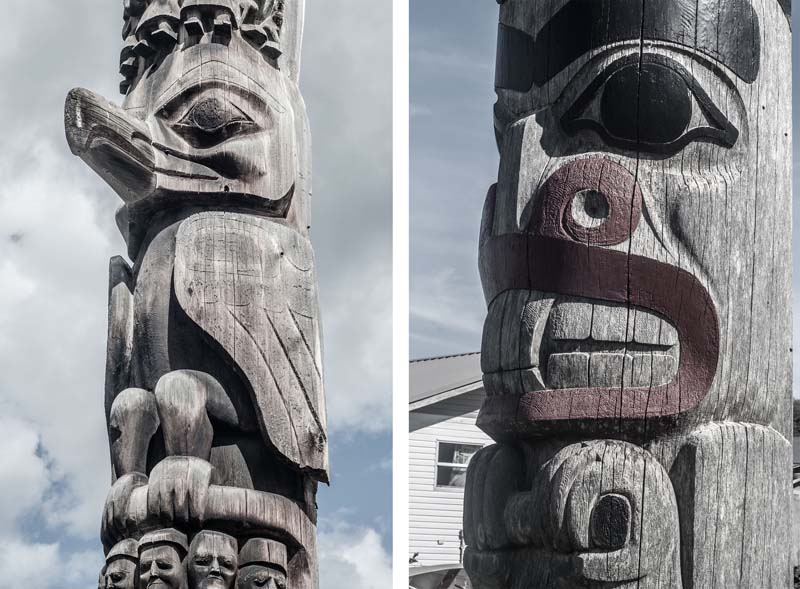
Figures 2 & 3: Formline comparison between: A Gitxsan totem pole in Gitanyow, BC, and a Haida totem pole in Old Masset
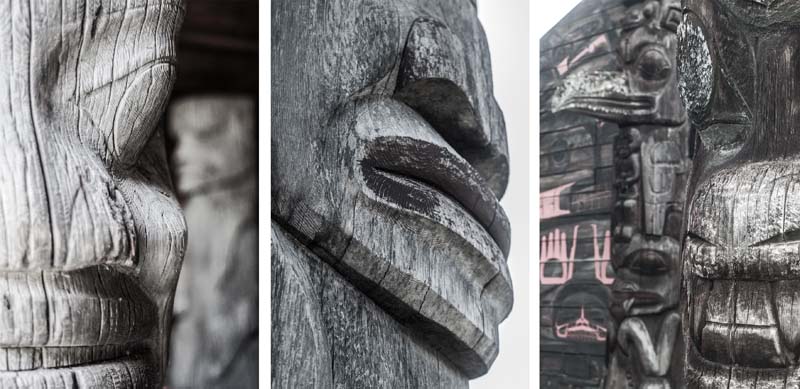
Figure 4, 5 & 6: Formline comparison between: A Gitxsan totem pole in Gitanyow, BC. A Haida totem pole in Old Masset (Note the flat and fat lip. This was a symbol of a higher-ranked individual in the Haida social matrix). A Gitxsan totem pole at the Ksan Historical village in Hazelton, BC
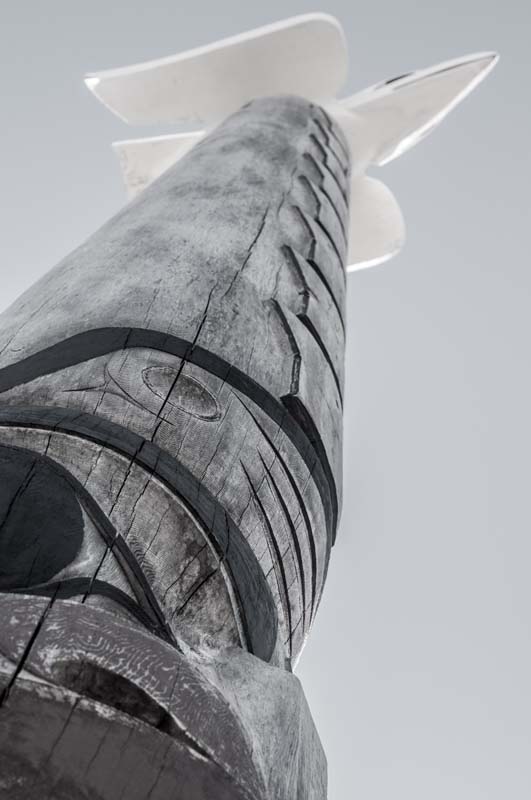
Figure 7: A totem pole, Skidegate
Today, several villages with their totem poles, longhouses, and other structures lay abandoned around the coastlines of Haida Gwaii. To the horror of many heritage conservationists, especially in the Gwaii Haanas National Park Reserve (which forms the southern tip of the archipelago), Haida elders have decided to simply let this physical heritage be untouched, for these poles to now nourish other members of the bio-diverse lands and waters. Moss, lichen, and new trees now sprout from their remains, and will eventually dissolve and digest them into the ground. (Fig 8) Those villages and peoples have ceased to be, what then can totem poles or any other artifacts mean without those whose stories they tell?
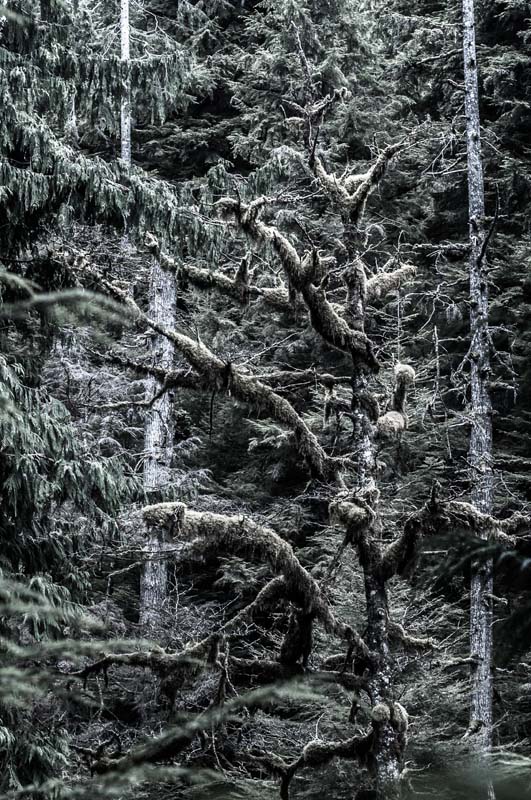
Figure 8: Trees at the Naikoon Provincial Park
The way Haida elders think of the physical heritage of the villages of Gwaii Haanas today is representative of significant features of Haida spirituality. What I have surmised from various conversations with artists and elders of the Haida Nation is that in their cosmology, each pole, each animal (marine or terrestrial), and each canoe is treated as a being and as having a place. Animals, humans, and trees are believed to live in similar spaces, in their appropriate cosmic zones, and to even have similar social organizations.4 As is commonly referred to in Old Masset, elders often thought of the Haida social ties to be analogous to the way the roots of the massive cedar, spruce, and hemlock trees on the archipelago interweave, support, and structure each other. And with the density of forests on Haida Gwaii, such interweaving and the birthing of roots occurs not only under the ground but also in several upper registers or heights of the forest. (Fig 9 & 10) With forests teeming with as much life in the ground, among the trees, and aerially, how could one not think of them as "spirited"? This is perhaps also what Emily Carr captures in her paintings of coastal BC.
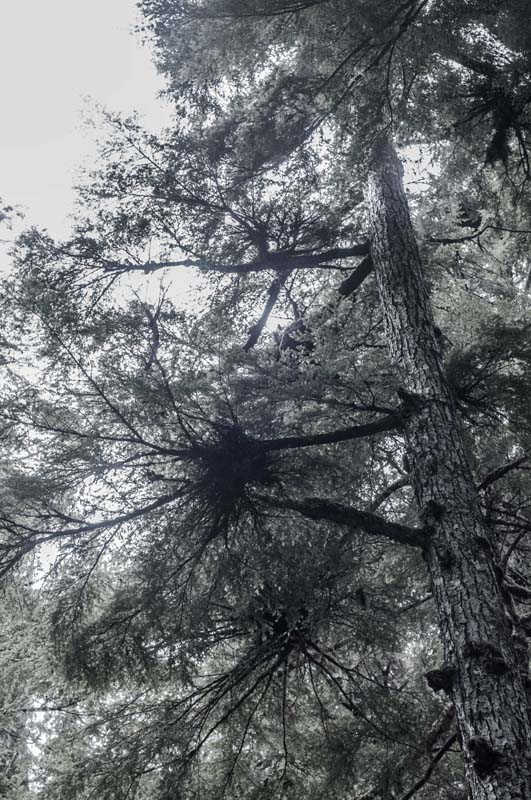
Figure 9: Tree branches and networks at the Naikoon Provincial Park
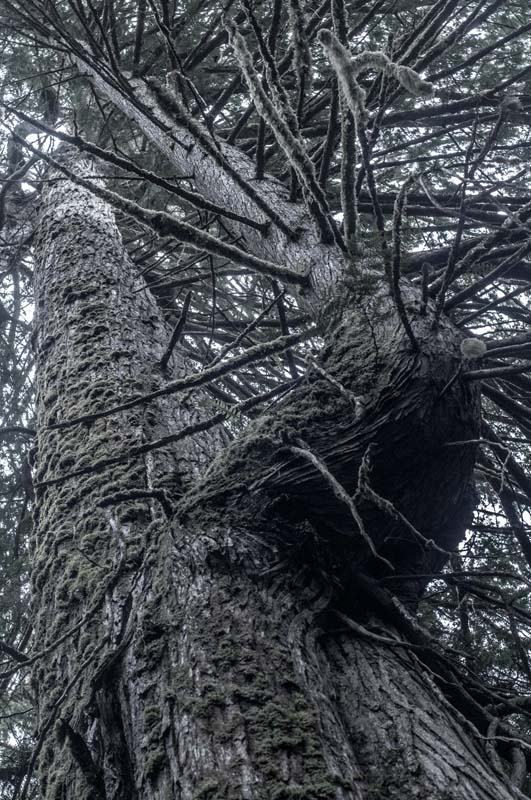
Figure 10: Trees at the Naikoon Provincial Park
With the Haida, there is an understanding that behind each being or creature exists a soul (for lack of a better English word). Here again, as in my previous fellowship reports, we are dealing with the notion of animism and empathy as pan-Indigenous themes describing (cosmic) architectural space. The notion of a mask and skin is helpful in the case of the Haida: it is believed that many a supernatural being often wore the skin of a killer whale, seal, halibut, and so on; that is, the outward appearance of a being is thrown in question and it is not known what inner being a mask or skin may conceal—and how it came to do so. Here, humans and animals alike may be masks and/or skins.5 Such spiritual beliefs were also literalized and physicalized: Haida festive attire often included wooden face masks and made use of the skins of fish, seals, rabbits, and other creatures. Respect and empathy, influenced perhaps by caution and fear too, are therefore to be extended to each being. Over and above all, the uncertainties of the oceans are to be navigated with both humility and knowledge, which in turn breed empathy. In Haida mythology, I am told, it is believed that various supernatural beings may have their worlds adjacent to and bordering human worlds. Killer whales, for example, are believed to have their spatial matrix mirror those of human worlds—where the surfaces or edges of waves form not only the axes of mirroring, but also the common edges and thresholds of the worlds of both species.6 As Robert Bringhurst put it, “the primary realm of the gods, in Haida cosmology, is not celestial; it is submarine”. How can it not be, with such an active and dynamic littoral zone?
On the one hand, the might of the ocean and (possibly supernatural) abilities of certain creatures command respect. On the other, however, there is also an understanding that what sustains the mighty (including humans) are smaller creatures which must not be taken for granted and be given an equal amount of respect. Trees are also understood to be an invaluable part of their ecosystem and given personae, respect, and empathy—in complete contrast to the way loggers extract trees from the old growth forests of Haida Gwaii (Fig 11 & 12). Such empathy is well captured in the Haida artist April White’s series of paintings titled The Herring People. As White herself claims, “Gina waadluxan gud ad kwaagiida” or “Everything depends on everything else”.7 The series consists of eight different species such as dolphins, humpback whales, salmon, humans, and others all painted as nested within a large herring, thus highlighting their dependency on herring. The interconnectedness between species is thus highlighted, as well as the pivotal role of herring in the ecosystem. White’s visual representation emphasizes the popular Haida trope of the nesting of figures one within another, as well, their scaling beyond their actual dimensions and proportions. (Fig 13, 14 & 1). The Haida formline elegantly incorporates the nesting of figures, which is evident in their carved totem poles, painted bowls, spruce root hats, canoe paddles, and so on. Similar—but not the same—formlines are also evident in the artwork of other First Nations of the Pacific Northwest (Fig 15). Evident in these are not only reciprocities and dependencies, but also a cyclicality in natural progressions of being nourished and providing nourishment—which humans are part of, and must not disturb the balances of. The work Herring People unites not only Haida cosmological and spiritual ethos with their formline, but it is also a work of activism that draws our attention to the overfishing that has chased shoals of herring away from the region. Fisheries continue to fail to understand the way things are interconnected, forcibly extract, and generate vast amounts of waste that do not return to the ocean to complete their various cycles of life. In complete contrast, to cite an anecdote of how the Haida conceived of human-animal relations: their way of harvesting herring roe was not to force them to spawn using various industrial means, but to lay seaweed on a baton and wait for them to lay their roe. If they were ‘gifted’ roe, they took it as the will of the shoal of herring and not as an extractive process guaranteed to yield. Thus the herring and humans both have agency in the relations the Haida forge with them. In Haida cosmology, a recurring theme is that we must always be cautious, empathetic, and most importantly, appreciate the implications of being in a non-human-centric universe.
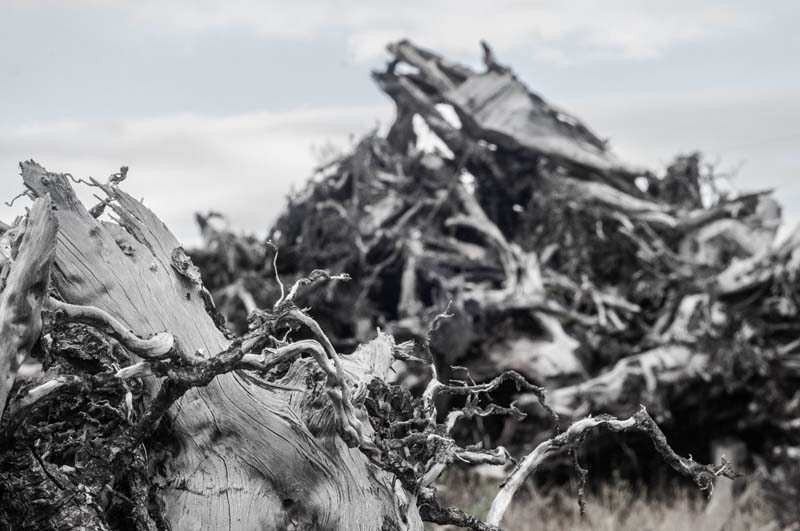
Figure 11: Burnt remains of post-logging tree bases and roots, Moresby Island
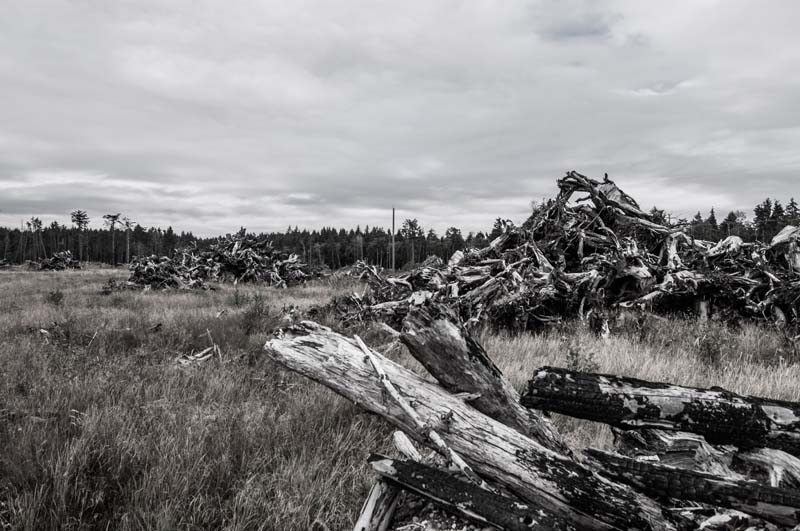
Figure 12: Heaps and fields of post-logging burnt remains of trees, Moresby Island
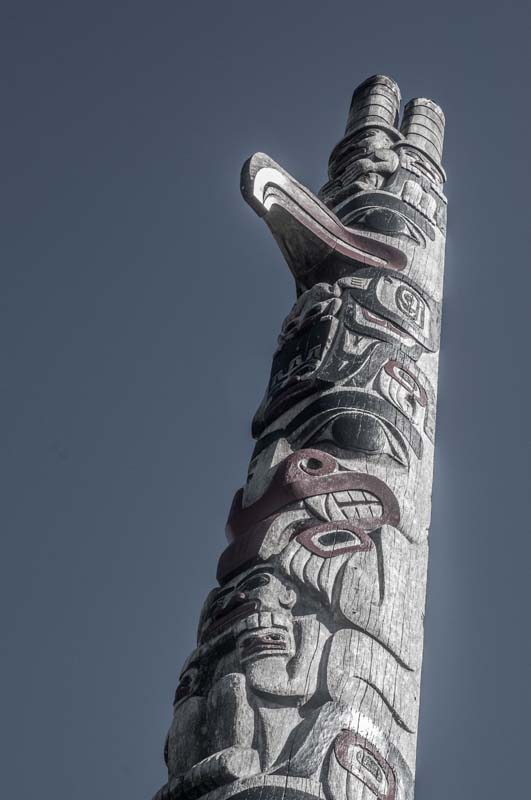
Figure 13: A totem pole, Skidegate
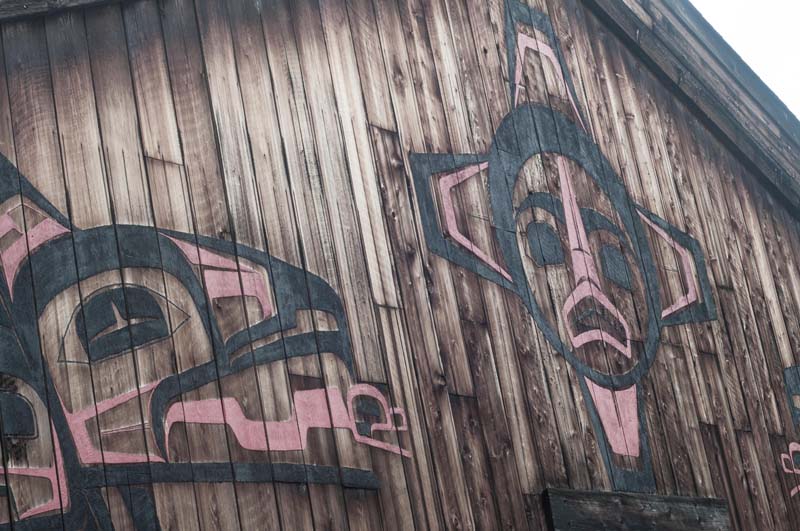
Figure 14: Gitxsan painting on a longhouse at the Ksan Historical village in Hazelton, BC
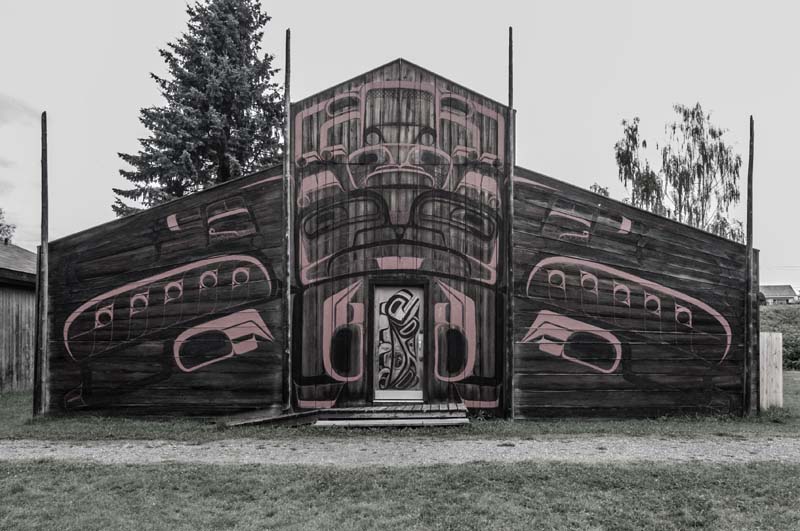
Figure 15: A longhouse at the Ksan Historical village in Hazelton, BC
Much of the information-rich and layered cosmology of the Haida also came from the fact that they were advanced seafarers, with exchanges as rich as the mercantile city of Venice (but without its fame or glamor). The Haida knew the resources that were plentiful on their lands but also those that were not and could be brought from elsewhere.8 They undertook long voyages in their masterfully crafted dug-out canoes—which are significant works of both art and science: not only was there much insight and wisdom involved in picking the right cedar that would be destined to be a canoe, and carving it accurately to the grain to achieve optimal performance, weight, and durability; but the carving and painting of canoes was also the realm of extremely talented Haida artists practicing their formline to yield slenderness and aero-dynamism. (Fig 16 & 17) Indeed, the naturally gifted strong vertical axes of the cedar forests of Haida Gwaii were tactfully extended into the horizontal realm through their canoe-making. These skills and their knowledge of how to navigate the ever-surprising oceans made the Haida extremely adept long-distance seafarers. Of course, their exchanges (including marriages and other human exchanges) with the neighboring Nisga’a, Tsimshian, coastal Tlingit, and other First Nations of British Columbia were more frequent than their longer voyages. Copper, for example, discovered in what is now the Yukon, came to be coveted on Haida Gwaii, and formed a significant possession of wealth. Not only was giving a copper shield a means of wealth transfer or a show of immense gratitude or a favor (especially during marriages), but copper also penetrated several spirit and myth-worlds of the Pacific Northwest.9 (Fig 18) Other commonalities and relations in the region are also evident in the common moiety structure of the raven and the eagle, and in several common crests such as killer whales, frogs, wolves, and so on. Other than these relatively shorter trips to neighboring peoples, I am also told by Haida elders how their ancestors were influenced by—and in turn influenced—lands as far as Polynesia, China, and India. Traces are still found in their language, for example, the word naani (used to describe both a grandmother but also an elderly aunt or woman acquaintance) is common to Haida and several Indian languages. These exchanges all ensured the continuous strengthening of the pool of techniques, tricks, and technologies that formed their traditional knowledge and heritage. And the expressions of this knowledge are well-encapsulated in their myths and stories, all passed on through their oral traditions.
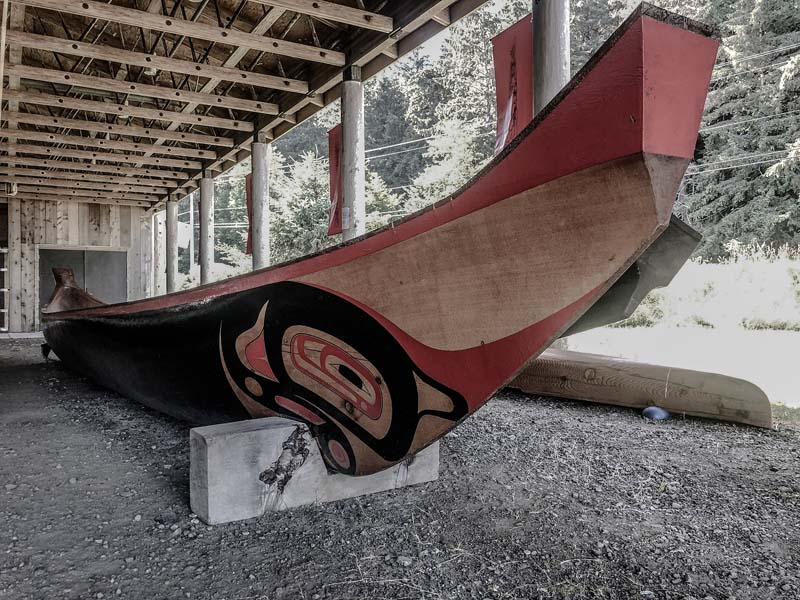
Figure 16: A dug-out canoe at the Haida Gwaii Museum, Skidegate
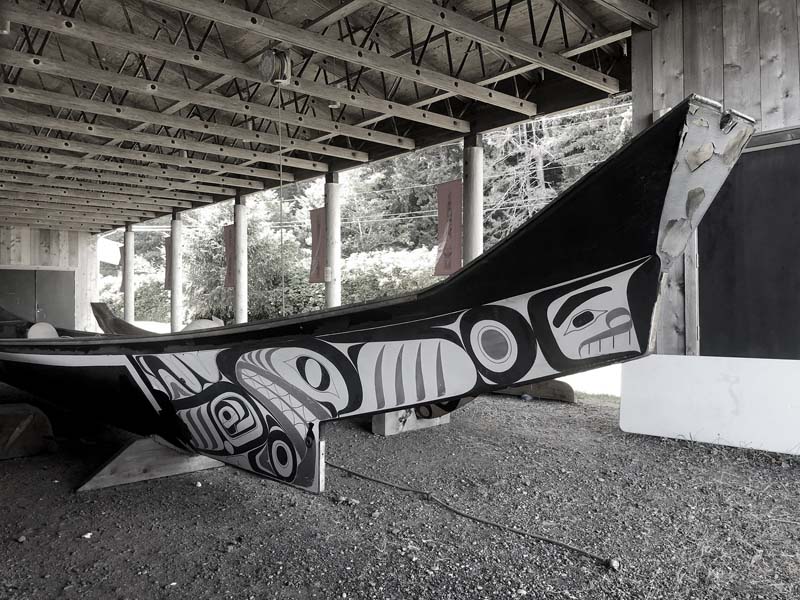
Figure 17: A dug-out canoe at the Haida Gwaii Museum, Skidegate
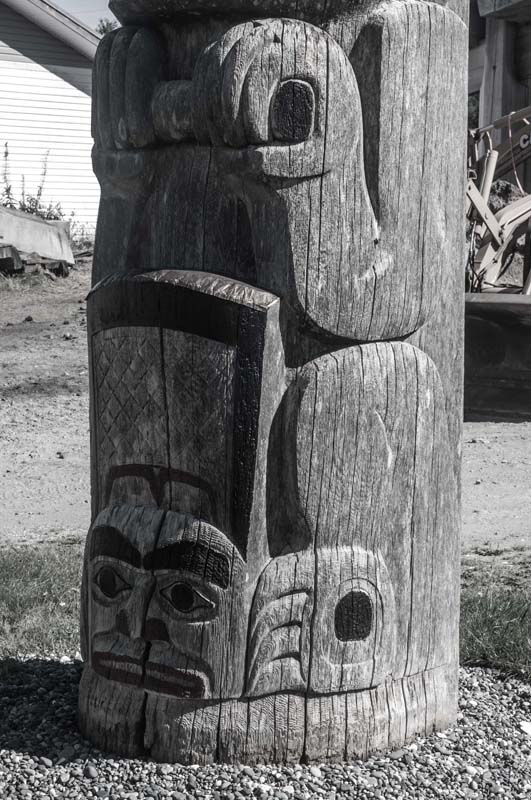
Figure 18: Base of a totem pole highlighting a copper shield in Old Masset
Haida space and the longhouse
The above-described aspects of the Haida civilization—their food harvesting methods, carving, voyaging, and their myth worlds—all form a marine cosmology, from which emerges their notion of architectural space. I have found their geometry and proportions to be not only astoundingly beautiful but also complex; the topologies of both curvature and variation of marine architectures (such as shells) appear to be somehow encapsulated in their seemingly simple and elegant spaces. I don’t quite understand how, and this continues to intrigue and provokes curiosity; and the following writing is a means to articulate what appears to be deeply mystical to me.
Haida cosmic space appears to consist not just of the oceans and the Hecate Straight approaching from across the horizon, but also of a moisture-laden vertical axis: the ample rain that sustains one of the world’s densest rain forests.10 And indeed the dynamic bio-chemistry and bio-diversity of these rich forests in-form the Haida conception of space, which I characterize as grand and beautifully proportioned, but also flexible, varied, and dynamic. While beams and canoes address the axis of—and toward—the ocean and horizon, the totem poles and smoke-holes in the roofs address the vertical axis or the axis mundi. The longhouses well encapsulate these sensibilities. I must mention that I have not witnessed a traditional longhouse as I have heard it described to exist, and to the best of my knowledge, the ones existing today are only a part of a more elaborate spatial typology. (Fig 19 & 20) And of the ones existing today, I have been most drawn to the longhouse shops built and used by carvers. The traditional longhouse is one I have understood only through oral accounts and memories of those I have spoken to on the island. Not only were they literally long with their dominant axis gesturing to connect the forest with the oceanic horizon, but the houses continued with a quay-like outdoor component built on stilts onto the horizon (which cease to exist today in most cases). Additionally, these horizontal axes were often further extended with small farms or plantations behind the houses, bordering the forest. The axes of the distant voyages as well as the approaching clouds and weather are all encapsulated in this axial gesture of the longhouse. Various vertical axes—the axis of the tall cedar forest, but also of the rain, lightning, and so on—are also gestured to with the longhouse, with its totem poles (Fig 21), smoke holes in the roof (Fig 22), the stilts that wade through the intertidal zones, and with the columns or posts being carved and curved to taper and gently continue vertically past the height of the eaves of the roof. (Fig 23) Haida elders also mentioned the importance of a root cellar to me, which I also find to be an important vertical component of the Haida spatial matrix: it grounds an infinite upward extension, not visually, but conceptually with the common knowledge of the importance of the root cellar in the lives of the Haida.11 MacDonald has described two types of Haida longhouse constructions: one punctuated by a few columns within and a simpler and lighter roof structure (Fig 24); and a second type with a roof supported by—and expressed by—heavy beams along its long axis, which allow for longer spans and an uninterrupted volume within.12 (Fig 25) He describes the latter as having evolved by incorporating wood joinery used by the Europeans, an incorporation that was unique to the Haida and distinguished their longhouses from those of their neighbors in the Pacific Northwest. Thus, while the longhouse is a common typology found in several Indigenous communities in the region, the way space is gestured to and articulated through the Haida longhouse, I hope, situates the uniqueness of its being, and of not taking, but holding cosmic space.
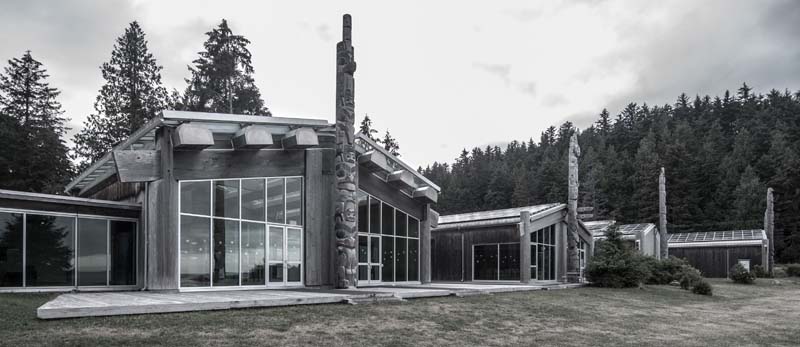
Figure 19: Longhouses at the Haida Gwaii Museum, Skidegate
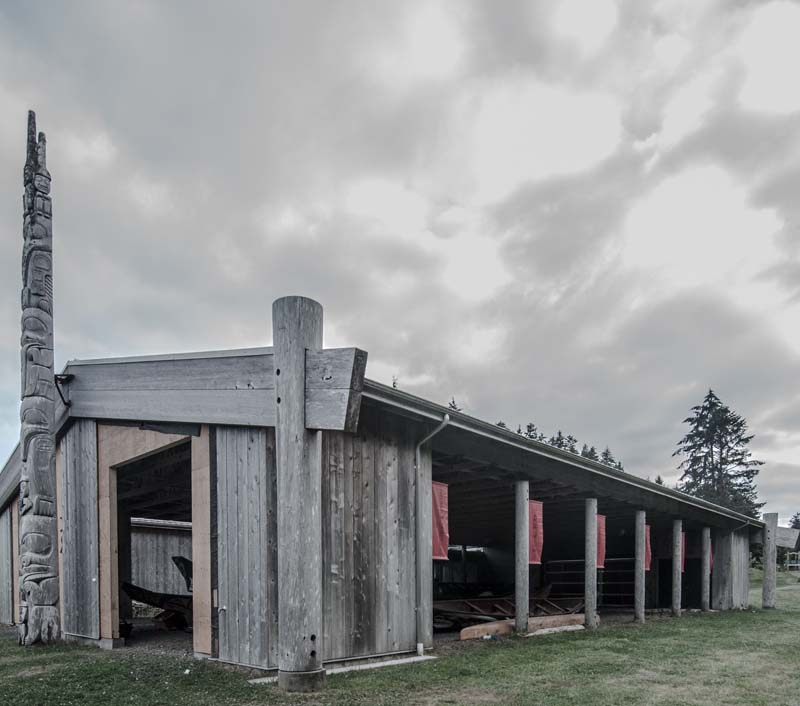
Figure 20: Canoe house at the Haida Gwaii Museum, Skidegate
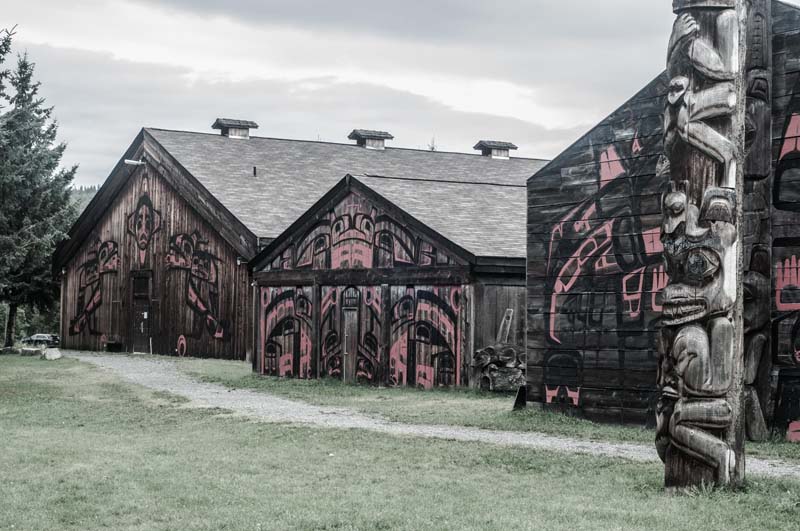
Figure 21: Gitxsan longhouses at the Ksan Historical village in Hazelton, BC
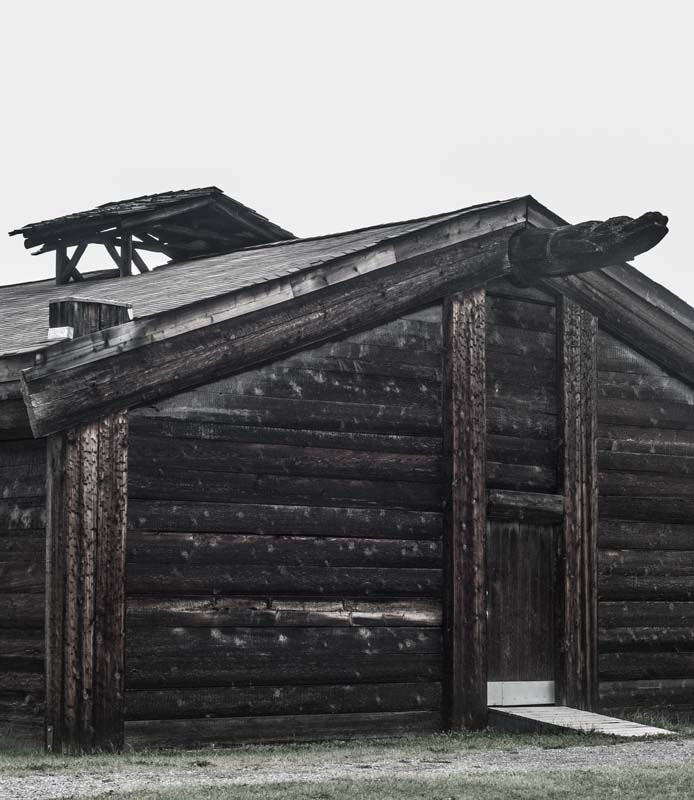
Figure 22: A Gitxsan longhouse at the Ksan Historical village in Hazelton, BC (The smoke hole apparatus is similar to the first type of Haida longhouse construction described)
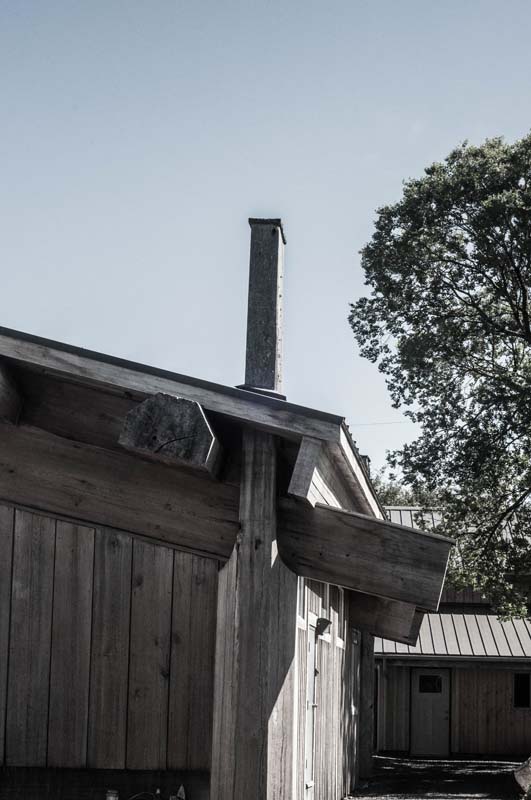
Fig 23: Construction detail of a longhouse in Old Masset
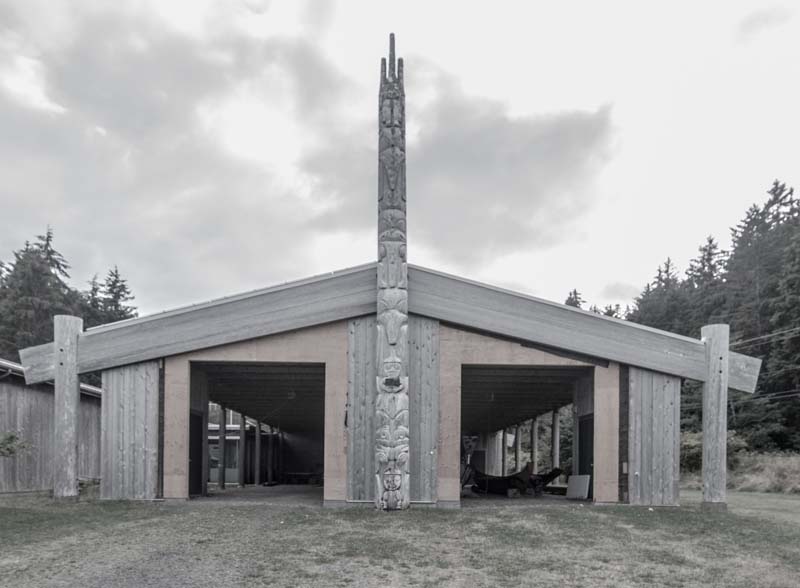
Figure 24: Canoe house at the Haida Gwaii Museum, Skidegate
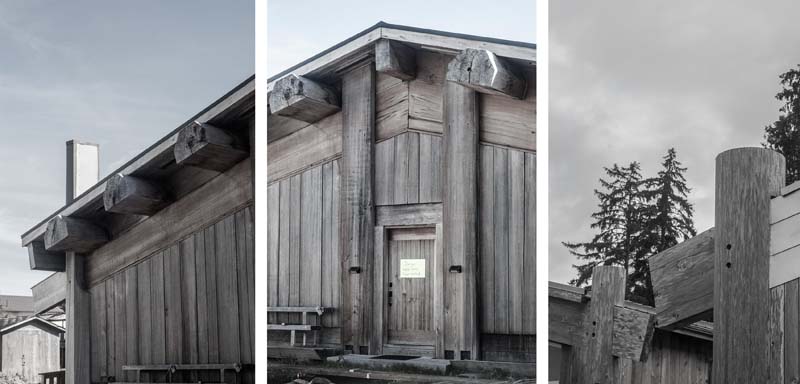
Figure 25: A (nearly complete) longhouse in Old Masset
Let us also explore this uniqueness by revisiting some tropes of how the Haida situated humankind with regard to other species and spaces. First, the longhouse, or rather any enclosure was an apparatus to not only mark the passage of time, but also locate their place in the cosmos. The smoke-holes that were used to track the light of the suns and stars were significant. This reminds one of Greek antiquity. However, unlike Greek sacred buildings, they do not only abstractly situate a notion of space, time, and the shape of the cosmos; but they are also telling of the social constructions and lives of the Haida. For example, several members of a clan would share a longhouse and could be identified with the crests on their frontal totem pole (with the appropriate "reading methods" described earlier). Moieties (raven and eagle for the Haida) and associated crests dictated the family structure and thus who could inhabit a longhouse. Entrances of longhouses were often ovoid—which is also a dominant shape of the Haida formline—with their heights positioned such that one would have to bow while entering, thus making themselves vulnerable. This not only served to protect the clan against intruders, but bowing was also a way of paying respect to the sacred space they were about to enter. Such innuendoes told one longhouse apart from another. Unlike the separation of temples and living quarters in Greek society, Haida longhouses were both sacred buildings as well as homes. This difference is highly significant. The divisions in Greek society—of domesticity and private life (oikonomia) on the one side, and sacred and public or civic life on the other (which were placed together in their architectural or urban planning)—did not exist for the Haida. The realm of supernatural beings for the Haida is not in separate spaces that share no contact with human spaces; rather—and as the masks and skins in their beliefs discussed earlier also suggest—supernatural beings can exist among humans, wearing skins of various species, and their worlds are adjacent to or even juxtaposed with ours, only slightly outside our plain-sight. The longhouses, plank-houses, skin-tents, or any other buildings erected by the Haida encapsulate such an understanding: the conditions of architecture in a non-human-centric universe.
Concluding notes
We are clearly dealing with a highly complex civilization with an intricate cosmology and a difficult history. In this short report, I have tried to approach a holistic understanding of the beliefs that structure Haida space, as carried through their oral history and embedded in their arts, using an inductive research method has involved talking to elders and artists in various cafes, artist’s shops and studios, and luckily, also attending ceremonies such as a "Headstone Moving." For all of this, I am infinitely grateful to those who were willing to speak with me and invited me into their communities, and to those from the village council of Masset who helped set up the initial meetings. I have been extremely fortunate to have met these lovely people, develop friendships with them, and by doing so, understand a little bit, their rendition of what Haida Gwaii is and used to be. And it is to them that I graciously owe this writing.
Endnotes
1 While I appreciate and use Robert Bringhurst’s work about the Haida, I also do so hesitantly. I have been informed on the island of how his work and relationship with the people face various ethical dilemmas. Robert Bringhurst, A Story as Sharp as a Knife: The Classical Haida Mythtellers and Their World, 2nd ed., vol. 1 (Vancouver/Toronto/Berkeley: Douglas & McIntyre, 2011), p 157.
2 The common Haida belief is that smallpox and other diseases were intentionally spread by the Colonial powers, and were thus bio-weapons used against their people.
3 Bill Holm, Northwest Coast Indian Art: An Analysis of Form (University of Washington Press, 2017).
4 George F MacDonald, “The World Is as Sharp as a Knife: An Anthology in Honour of Wilson Duff,” in Cosmic Equations in Northwest Coast Indian Art, ed. Wilson Duff, 1977, p 229.
5 The site of Levi-Strauss’ formative work on a general theory of masks was Haida Gwaii and a few other coastal First Nations of the Pacific Northwest. Claude Lévi-Strauss, The Way of the Masks, trans. Sylvia Modelski (Seattle: University of Washington Press, 1982).
6 The edge is a popular theme in Haida Gwaii, and this is well encapsulated in many titles of Haida art or about Haida art; for example, the Edge of the Knife (the first Haida language film made) and A story as sharp as a knife (a book about Haida poetry).
7 From the artist’s website: http://www.aprilwhite.com/art/v/serigraphs/herringpeople/herringpeopledogfish/herringpeopledogfishIII.png.html
8 Learned via several conversations. For a few accounts, see also George F. MacDonald, Chiefs of the Sea and Sky: Haida Heritage Sites of the Queen Charlotte Islands (UBC Press, 1989), p 21.
9 Lévi-Strauss describes how copper was used as currency in somewhat similar ways by different peoples of the Pacific Northwest Lévi-Strauss, The Way of the Masks, p 35–39; 89–92; 228.
10 As MacDonald has pointed out, for the Haida, along this vertical axis are the strata of the underworld (creatures below the ground and the sea); the middleworld (creatures that live in the forest); and the upperworld (aerial creatures). MacDonald, “The World Is as Sharp as a Knife: An Anthology in Honour of Wilson Duff,” p 228.
11 And as MacDonald has pointed out, along this vertical axis, the Haida perceived of five layers of the cosmos above the “sky door” or smoke-hole of their longhouse, as well as five levels in the underworld. MacDonald, Chiefs of the Sea and Sky: Haida Heritage Sites of the Queen Charlotte Islands, p 17.


Leave a commentOrder by
Newest on top Oldest on top